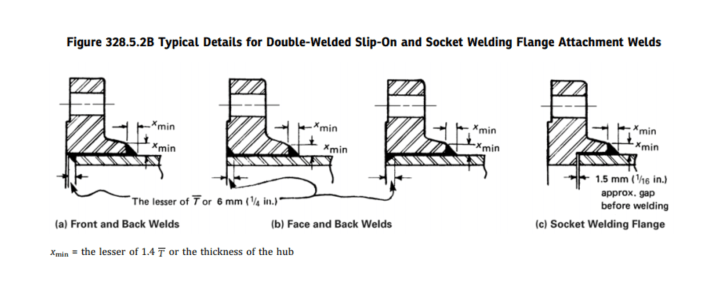Hturkat said:
You wouldn't allow it to happen if you had any responsibility for it, but still acceptable ?..
Correct because that would be my personal Opinion as opposed to a technical argument relating to codes and standards.
I think KevinNZ as usual has an excellent comment which is the fitting code, presumably ASME B16.9, is quite specifically in its title "...Buttwelding fittings"
Now I can't find in there any specific requirement in B16.9 that the fittings need to be buttwelded, but maybe the authors didn't think that was required when it is implicit in the title of the code.... and in it's scope (my emphasis)
"This Standard covers overall dimensions, tolerances,
ratings, testing, and markings for factory-made wrought
buttwelding fittings
Therefore the use of a slip on flange would, IMHO, mean that the fitting is now an unlisted component to B 31.3.
If however the manufacturer of the reducer were to certify that it could be attached using SO flanges, then that may be sufficient to move forward.
HOWEVER, ASME B 31.3, fig 328.2.5B clearly shows that for a slip on flange, the hub needs to be fully over the pipe end, with the end of the pipe or fitting within "the lessor of T or 6mm." This looks a LOT more than 6mm - closer to 12 or more
Nabeel3 - Why on earth is this arrangement being considered?? It is at best sub optimal and at worse would put whoever approves this in difficulty if it failed in service. Are you trying to justify this or trying to say it is not acceptable?
Remember - More details = better answers
Also: If you get a response it's polite to respond to it.

